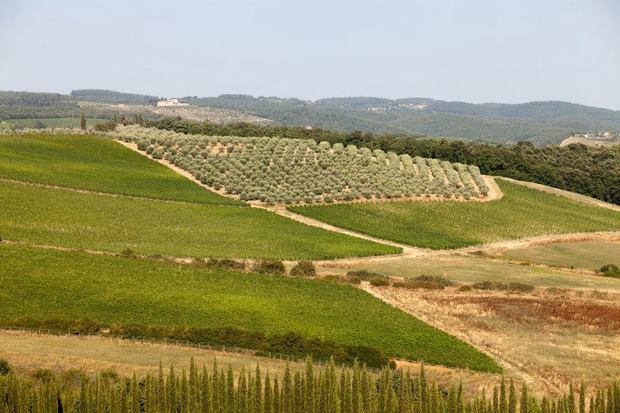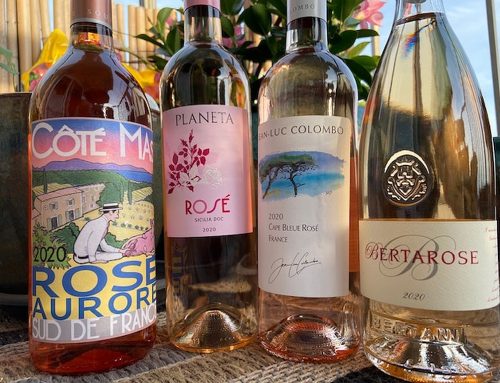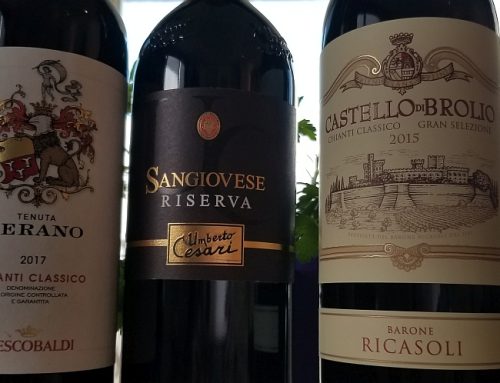At Tenuta di Bibbiano, the current generation sees the future in its ancestors who never used pesticides nor cultivated foreign grapes.
Located in the charming village of Castellina in Chianti, Bibbiano is first mentioned in a document dated 1089 in the Abbey of Passignano. Five hundred years later, Matteo Squarcialupi willed Bibbiano to the Santa Maria Nuova Hospital in Florence. At that time, it was common for wealthy landowners to donate property to the church as a way to pave the road to heaven. What the donor got is unknown; but history recorded the vast estates owned by the church.
In 1780, Jacopo Landi acquired Bibbiano from the hospital; his ancestors sold it in 1865 to the brothers Casimiro and Pietro Marzi. Today, Bibbiano is led by the fifth generation and another set of brothers, Tommaso and Federico Marzi. In early spring, Tommaso Marzi was in New York City and presented a selection of older and current Bibbiano Chianti Classico wines.
Marzi explained that after World War II, the family rebuilt the property and planted new vineyards with the assistance of Giulio Gambelli, a self-taught Tuscan winemaker who assisted with 60 vintages at Bibbiano. But during the last decade, important changes were made.
A portion of the vineyards contained merlot, but the winery didn’t want to contaminate the sangiovese, so they stopped using merlot in the wines. The merlot vines were grafted with Tuscany’s indigenous sangiovese, sangiovese grosso and colorino grapes. In 2012, Bibbiano’s vineyards were certified organic.
Our tasting included the all-about-cherry 2009 Bibbiano Chianti Classico made with 97 percent sangiovese and 3 percent colorino. Cherry is the color, aroma and taste. If this wine was a boxer, it would be in the lightweight division, and it packs a punch. Its tasty, ripe cherry fruit delivers a clean jab to the palate and is supported by soft tannins and balanced acidity. This is the red wine you want alongside grilled chicken legs in your next picnic basket.
The 2009 Bibbiano Montornello Chianti Classico is made only with sangiovese and from older vines; the wine is aged for 20 months in casks and barrels—five times longer than the Chianti Classico—and its cherry color is darker, too.
Sangiovese’s cherry and rose hip scents permeate the air,and the 2009 Bibbiano Montornello Chianti Classico’s medium body carries a classic savory red fruit flavor with harmonious tannins and acidity. Bring this wine to the table with a plate of barbecued spare ribs.
Vigna del Capannino is Bibbiano’s Chianti Classico Riserva. It’s made only with sangiovese grosso, the clone for brunello di Montalcino, and from the oldest vines on the estate. The 2008’s eye-appealing black cherry color begins a sensual ride across plum and black fruit aromas and flavors that are delivered seamlessly from the harmonious tannins and acidity. This richly flavored wine stands at the top of Bibbiano’s scale and can hold its place next to grilled lamb chops and your favorite steak.
I was delighted that the Bibbiano wines were without the weight of other Chianti Classicos, which are blended with international grapes like merlot, cabernet sauvignon and syrah. It is a testament to the Marzi’s judgment, and the elegance of its indigenous grapes.
The 2009 Bibbiano Chianti Classico retails for about $19; 2009 Montornello around $22; and the 2008 Capannino Riserva $30.








Leave A Comment